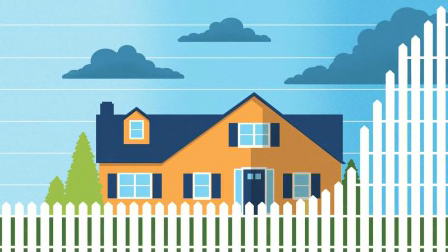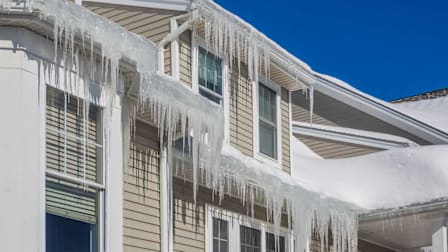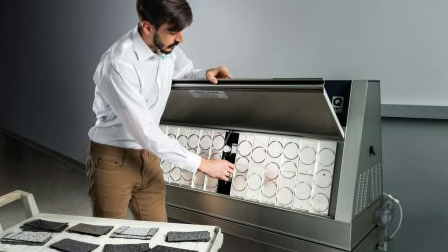3 Best Roofing Shingles of 2025, Lab-Tested and Reviewed
Check out CR’s top-rated 3-tab, architectural, and multilayered architectural asphalt shingles
When you shop through retailer links on our site, we may earn affiliate commissions. 100% of the fees we collect are used to support our nonprofit mission. Learn more.

Choosing strong roofing shingles is a crucial step toward making sure that you, your home, and your belongings are well protected. (Another key step: hiring a good roofing contractor.) Consumer Reports’ comprehensive testing reveals that the best roofing shingles can be more than twice as strong as the competition.
Your roof provides your house’s chief protection against severe weather and all that comes with it: hail, water and ice, fallen trees, and debris. CR’s testing focuses strictly on asphalt roofing shingles because they’re the most common choice for roofs by far. They’re easy to install, last 10 to 50 years depending on the type, and are less expensive than other roofing materials, such as slate, tile, and metal.
Best Roofing Shingles
Below are the best asphalt shingles for each type that we test: multilayered architectural, architectural/laminated, and three-tab, respectively. And we explain what differentiates each type.
How CR Tests Roofing Shingles
Our roofing tests focus on a shingle’s strength and how well it maintains its appearance over time. We use a calibrated machine called an Instron that applies force to shingles to replicate everything from ferocious winds to fallen tree limbs.
We test the thickest part of each shingle, which is where the largest number of layers overlap. And we test the thinnest parts—typically near the edges—where there’s often only one layer of material. That’s because those are the weak spots that can lead to loose or cracked shingles and eventually leaks. We also drop 5-pound weights from various heights to simulate heavy hail to see which shingles bend, dent, or crack from the impact. To see how they stand up over time to sun and rain, we use a machine that exposes them to 500 hours’ worth of ultraviolet light that’s as bright as the midday sun and water sprays that duplicate strong rain.
A Note on Shingle Pricing
While home centers price roofing by the bundle, the square footage a bundle covers will differ by product line. In our ratings, we list prices per “square,” an industry term that denotes a 10x10-foot area, or 100 square feet. This allows you to make direct price comparisons across different lines of shingles.
Types of Roofing Shingles
The three types of asphalt shingles we test are three-tab, architectural/laminated, and multilayered architectural. Here’s a quick explanation of how each differs:
- Three-tab shingles are the most common. These single-layer shingles are typically rated to withstand winds up to 60 mph and moderate impacts from flying debris or hail.
- Architectural/laminated shingles have several layers and can withstand stronger winds and weather than three-tab shingles.
- Multilayered architectural shingles are the toughest of the bunch, with some rated for winds of up to 110 mph.
“When you see these shingles up close, it’s easy to see how some of the thicker, multilayered shingles fare better than standard three-tab shingles,” says Misha Kollontai, CR’s test engineer in charge of roofing. “In some cases, the material is so thick you’re getting more than triple the protection you’d get from standard shingles.”

































